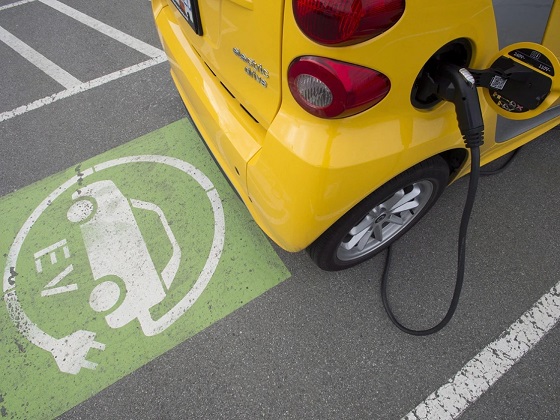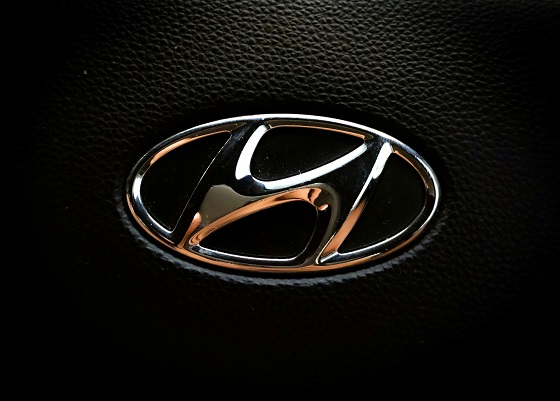Automotive
It’s Time To Abandon Reckless EV Mandates

From Canadians for Affordable Energy

Already, billions of tax dollars have been handed out in subsidies to companies that have no accountability to the Canadian taxpayer. This experiment in societal re-engineering will disproportionately harm Canadian workers and families, especially those who live in rural communities.
And it will surely fail
Canada is not nearly ready for the wholesale adoption of electric vehicles (EVs).
That was the message of the letter I sent to every member of Parliament recently, urging them to drop the “Electric Vehicle Availability Standard” introduced by the Trudeau government late last year. That’s the policy that mandates that all new vehicles sold in Canada must be electric by 2035. There is no way, considering the economic, technological and infrastructural realities of our country — and our world — where this is possible.
Stubbornly attempting to achieve this goal would do serious damage to our economy, leaving Canadian taxpayers on the hook for generations to come. Already, billions of tax dollars have been handed out in subsidies to companies that have no accountability to the Canadian taxpayer. This experiment in societal re-engineering will disproportionately harm Canadian workers and families, especially those who live in rural communities.
And it will surely fail. In my letter I highlight a few of the central reasons why staying the course on EV mandates by 2035 is extremely reckless. Right off the bat, the technology is simply not there for electric vehicles to be a reliable source of transportation in Canada’s climate. The batteries cannot hold their charge in frigid temperatures. Forcing Canadians to rely on vehicles that can’t handle our winters is irresponsible and dangerous.
Electric vehicles’ cost is another issue. Right now, the EV market relies heavily on government subsidies. These subsidies can’t last forever. But without them EVs are prohibitively expensive. Even with them, the costs of maintaining an EV are high. Replacing a damaged battery, for example, can cost upwards of $20,000. Mandating that people buy vehicles they can’t afford to either purchase in the first place or maintain if they do buy them is political malpractice.
A fact long ignored by decision-makers in Ottawa is that our electrical grid isn’t ready for the excess demand that would come with widespread EV adoption. These mandates, paired with the government’s goal of fully decarbonizing the grid by 2035, put us on a collision course with the reality of unreliable power. A grid powered, not by reliable fossil fuels, but by spotty wind and solar energy would be further burdened with millions of cars relying exclusively on electricity.
Beyond the electricity itself, the EV mandates will require additional transmission and distribution capacity. But there are no signs any plan is in place to expand our transmission capacity to meet the 2035 target.
The sheer number of new charging stations required by wholesale adoption of EVs will strain our distribution networks. Natural Resources Canada projections show that Canada will need between 442,000 and 469,000 public charging ports by 2035. At the moment, we have roughly 28,000. And that doesn’t include the private charging stations people will need to install at home. Closing that gap in such a tight time frame is almost certainly impossible.
All of those considerations aside, at a fundamental level the government’s push for electric vehicles encroaches on the operation of the free market, all in the name of emissions reductions. The Canadian economy is founded on the market principle that the consumer drives the economy (no pun intended). Thousands of times over, it has been shown that if there is enough demand for a product, supply soon follows. In the case of EVs, however, the federal government is operating under the assumption that if you somehow create a supply, that will inspire a demand.
This hasn’t worked in any of the countries where it’s been attempted, which is why nations around the world have started to tap the brakes on EV mandates. Decision-makers in Ottawa need to follow suit and abandon these reckless and costly mandates. Let the market decide when EVs are ready for prime time. In other words, let Canadians decide.
Dan McTeague is President of Canadians for Affordable Energy
Automotive
Canadians’ Interest in Buying an EV Falls for Third Year in a Row

From Energy Now
Electric vehicle prices fell 7.8 per cent in the last quarter of 2024 year-over-year, according to the AutoTader price index
Fewer Canadians are considering buying an electric vehicle, marking the third year in a row interest has dropped despite lower EV prices, a survey from AutoTrader shows.
Forty-two per cent of survey respondents say they’re considering an EV as their next vehicle, down from 46 per cent last year. In 2022, 68 per cent said they would consider buying an EV.
Meanwhile, 29 per cent of respondents say they would exclusively consider buying an EV — a significant drop from 40 per cent last year.
The report, which surveyed 1,801 people on the AutoTrader website, shows drivers are concerned about reduced government incentives, a lack of infrastructure and long-term costs despite falling prices.
Electric vehicle prices fell 7.8 per cent in the last quarter of 2024 year-over-year, according to the AutoTader price index.
The survey, conducted between Feb. 13 and March 12, shows 68 per cent of non-EV owners say government incentives could influence their decision, while a little over half say incentives increase their confidence in buying an EV.
Automotive
Hyundai moves SUV production to U.S.

 MxM News
MxM News
Quick Hit:
Hyundai is responding swiftly to 47th President Donald Trump’s newly implemented auto tariffs by shifting key vehicle production from Mexico to the U.S. The automaker, heavily reliant on the American market, has formed a specialized task force and committed billions to American manufacturing, highlighting how Trump’s America First economic policies are already impacting global business decisions.
Key Details:
-
Hyundai has created a tariffs task force and is relocating Tucson SUV production from Mexico to Alabama.
-
Despite a 25% tariff on car imports that began April 3, Hyundai reported a 2% gain in Q1 operating profit and maintained earnings guidance.
-
Hyundai and Kia derive one-third of their global sales from the U.S., where two-thirds of their vehicles are imported.
Diving Deeper:
In a direct response to President Trump’s decisive new tariffs on imported automobiles, Hyundai announced Thursday it has mobilized a specialized task force to mitigate the financial impact of the new trade policy and confirmed production shifts of one of its top-selling models to the United States. The move underscores the gravity of the new 25% import tax and the economic leverage wielded by a White House that is now unambiguously prioritizing American industry.
Starting with its popular Tucson SUV, Hyundai is transitioning some manufacturing from Mexico to its Alabama facility. Additional consideration is being given to relocating production away from Seoul for other U.S.-bound vehicles, signaling that the company is bracing for the long-term implications of Trump’s tariffs.
This move comes as the 25% import tax on vehicles went into effect April 3, with a matching tariff on auto parts scheduled to hit May 3. Hyundai, which generates a full third of its global revenue from American consumers, knows it can’t afford to delay action. Notably, U.S. retail sales for Hyundai jumped 11% last quarter, as car buyers rushed to purchase vehicles before prices inevitably climb due to the tariff.
Despite the trade policy, Hyundai reported a 2% uptick in first-quarter operating profit and reaffirmed its earnings projections, indicating confidence in its ability to adapt. Yet the company isn’t taking chances. Ahead of the tariffs, Hyundai stockpiled over three months of inventory in U.S. markets, hoping to blunt the initial shock of the increased import costs.
In a significant show of good faith and commitment to U.S. manufacturing, Hyundai last month pledged a massive $21 billion investment into its new Georgia plant. That announcement was made during a visit to the White House, just days before President Trump unveiled the auto tariff policy — a strategic alignment with a pro-growth, pro-America agenda.
Still, the challenges are substantial. The global auto industry depends on complex, multi-country supply chains, and analysts warn that tariffs will force production costs higher. Hyundai is holding the line on pricing for now, promising to keep current model prices stable through June 2. After that, however, price adjustments are on the table, potentially passing the burden to consumers.
South Korea, which remains one of the largest exporters of automobiles to the U.S., is not standing idle. A South Korean delegation is scheduled to meet with U.S. trade officials in Washington Thursday, marking the start of negotiations that could redefine the two nations’ trade dynamics.
President Trump’s actions represent a sharp pivot from the era of global corporatism that defined trade under the Obama-Biden administration. Hyundai’s swift response proves that when the U.S. government puts its market power to work, foreign companies will move mountains — or at least entire assembly lines — to stay in the game.
-

 2025 Federal Election8 hours ago
2025 Federal Election8 hours agoThe Federal Brief That Should Sink Carney
-

 2025 Federal Election10 hours ago
2025 Federal Election10 hours agoHow Canada’s Mainstream Media Lost the Public Trust
-

 2025 Federal Election13 hours ago
2025 Federal Election13 hours agoOttawa Confirms China interfering with 2025 federal election: Beijing Seeks to Block Joe Tay’s Election
-

 2025 Federal Election12 hours ago
2025 Federal Election12 hours agoReal Homes vs. Modular Shoeboxes: The Housing Battle Between Poilievre and Carney
-

 John Stossel9 hours ago
John Stossel9 hours agoClimate Change Myths Part 2: Wildfires, Drought, Rising Sea Level, and Coral Reefs
-

 COVID-1911 hours ago
COVID-1911 hours agoNearly Half of “COVID-19 Deaths” Were Not Due to COVID-19 – Scientific Reports Journal
-

 Entertainment2 days ago
Entertainment2 days agoPedro Pascal launches attack on J.K. Rowling over biological sex views
-

 2025 Federal Election1 day ago
2025 Federal Election1 day agoPoilievre Campaigning To Build A Canadian Economic Fortress

